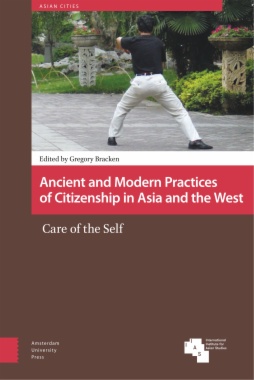What does it mean to be a good citizen today? What are practices of citizenship? And what can we learn from the past about these practices to better engage in city life in the twenty-first century? Ancient and Modern Practices of Citizenship in Asia and the West: Care of the Self is a collection of papers that examine these questions. The contributors come from a variety of different disciplines, including architecture, urbanism, philosophy, and history, and their essays make comparative examinations of the practices of citizenship from the ancient world to the present day in both the East and the West. The papers’ comparative approaches, between East and West, and ancient and modern, leads to a greater understanding of the challenges facing citizens in the urbanized twenty-first century, and by looking at past examples, suggests ways of addressing them. While the book’s point of departure is philosophical, its key aim is to examine how philosophy can be applied to everyday life for the betterment of citizens in cities not just in Asia and the West but everywhere.
- Cover
- Table of Contents
- Acknowledgements
- Introduction
- 1. Citizenship and the Good Life
- 2. Spaces of the Prudent Self
- 3. The Biopolitics of Sexuality and the Hypothesis of an Erotic Art
- Foucault and Psychoanalysis
- Luiz Paulo Leitão Martins
- 4. Elective Spaces
- Creating Space to Care
- Karan August
- 5. Interpreting Dao (道) between ‘Way-making’ and ‘Be-wëgen’
- 6. Constructing Each Other
- Contemporary Travel of Urban-Design Ideas between China and the West
- Katharina M. Borgmann and Deirdre Sneep
- 7. A Tale of Two Courts
- The Interactions of the Dutch and Chinese Political Elites with their Cities
- Ian R. Lewis
- 8. Urban Acupuncture
- Care and Ideology in the Writing of the City in Eleventh-Century China
- Christian de Pee
- 9. The Value and Meaning of Temporality� and its Relationship to Identity in Kunming City, China
- Yun Gao and Nicholas Temple
- 10. Junzi (君子), the Confucian Concept of the ‘Gentleman’�, and its Influence on South Korean Land-Use Planning
- 11. Home Within Movement:
- The Japanese Concept of Ma (間): Sensing Space-time Intensity in Aesthetics of Movement
- Renske Maria van Dam
- 12. The Concept of ‘Home’
- The Javanese Creative Interpretation of Omah Bhetari Sri: A Dialogue between Tradition and Modernity
- Sri Teddy Rusdy, Brandon Cahyadhuha, and Hastangka
- Afterword
- List of Figures and Tables
- Figure 7.1 Location of the Binnenhof in The Hague
- Figure 7.2 Plan of the Binnenhof
- Figure 7.3 Location of Zhongnanhai in Beijing
- Figure 7.4 Plan of Zhongnanhai
- Figure 9.1 Map of Kunming (after Jean-Baptiste du Halde, 1736)
- Figure 9.2 The Military Academy
- Figure 9.3 Huize Hall, Yunnan University
- Figure 9.4 Traditional houses, Wenming Street
- Figure 9.5 Shops, Wenming Street
- Figure 9.6 Restored courtyard house, Wenming Street
- Figure 10.1 Comparing land-use diversity on on city and neighbourhood scale
- Figure 10.2 Social strata during Joseon dynasty
- Figure 10.3 Confucian traces in Korean modernisation
- Figure 10.4 �Comparing a typical small-scale neighbourhood to an apartment complex
- Figure 12.1 Omah bethari sri (traditional Javanese house)
- Figure 12.2 Structure of the omah bethari sri
- Figure 12.3 Front yard and front door
- Figure 12.4 Pendapa
- Figure 12.5 Lampu gantung
- Figure 12.6 Dalem ageng
- Figure 12.7 Library
- Figure 12.8 Baleretna and gadri areas

